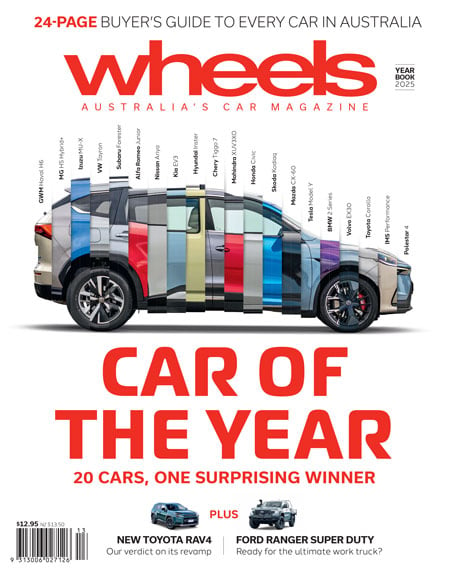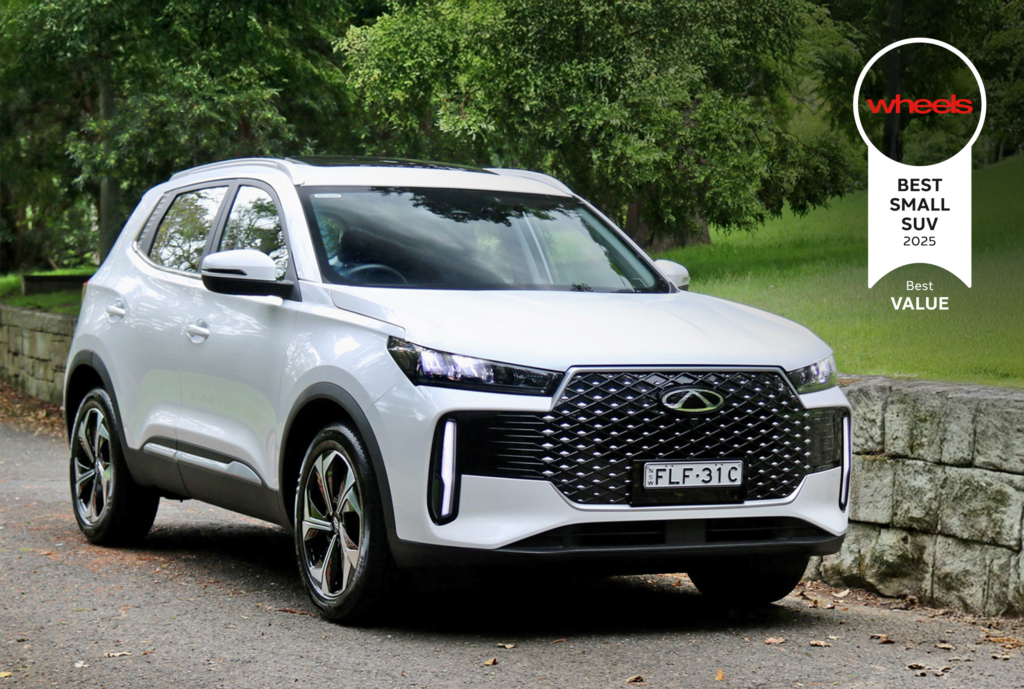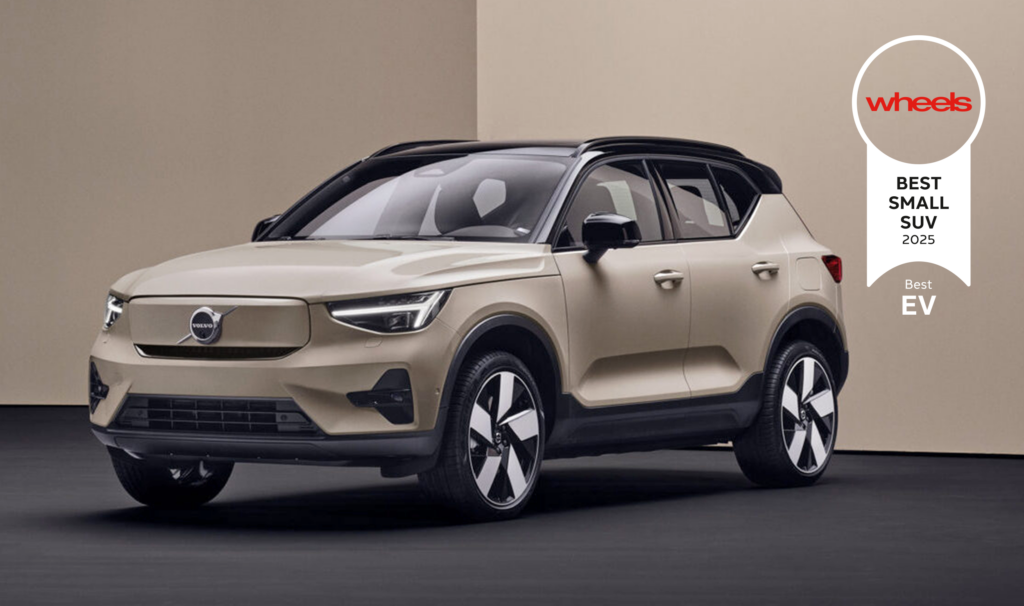There will always be a market for those looking for a good, reliable car under $30,000, particularly as many brands slowly creep up in price. And some of them are surprisingly feature-laden. Here’s our pick of the best small SUVs in the ‘budget’ category…
The Contenders
- MG ZS
- Mazda CX-3
- Chery Tiggo 4 Pro
- Kia Stonic
- Hyundai Venue
- Mitsubishi ASX
- Chery Omoda 5
- Suzuki Vitara
- MG ZST
- GWM Haval Jolion
Winner: MG ZS
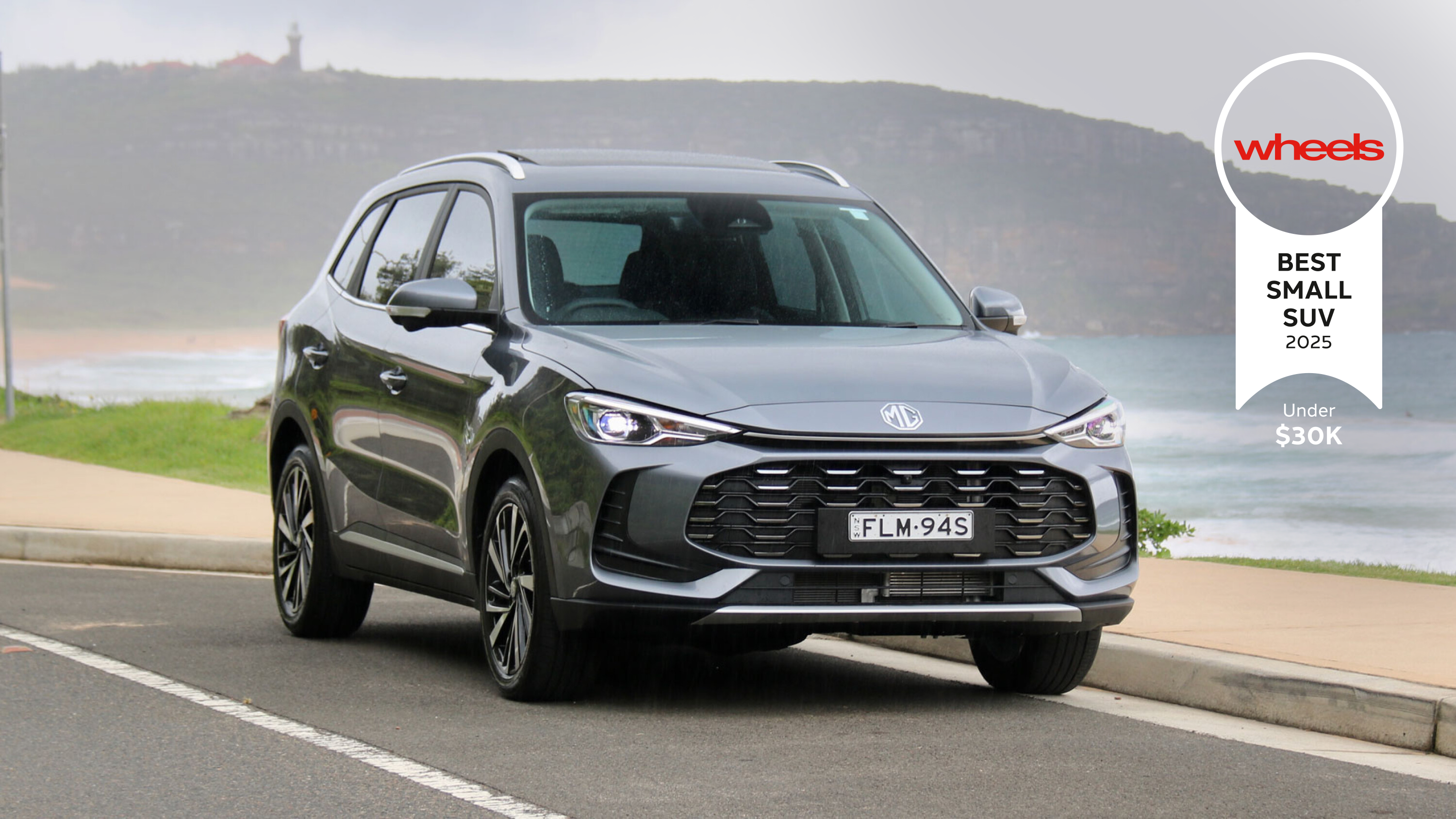
- Price: From $26,990 drive away (Excite)
- Drivetrain: 1.5-litre or 1.5-litre turbocharged 4-cylinder petrol, 81kW/140Nm or 125kW/275Nm, CVT auto
- Combined fuel economy, CO2 emissions, fuel type: 6.7-6.9L/100km, 157-161g/km, 91RON (1.5L NA) or 95RON (1.5T)
- Warranty: 10-year/250,000km, 12 months of roadside assistance
- Five-year service cost: $2,637 ($527 per year)
| Driving | |
|---|---|
| Interior | |
| Practicality | |
| Overall value |
Strengths
- A big improvement on the old ZS
- Cabin presentation and practicality
- Still excellent value in its segment
Weaknesses
- Petrol engines aren’t as well-rounded as the hybrid
- No steering wheel reach adjustment
- Expensive service pricing
The second-generation MG ZS first launched in Australia in November 2024 in Hybrid+ spec priced from $33,990 drive away, but the petrol-powered models have just arrived and lower the price of entry significantly to just $26,990 drive away.
While not as cheap as the ZST, the new ZS is better equipped and it’s also larger and more refined. The cabin is more modern with higher quality materials, while the growth spurt has allowed for a larger rear seat and boot – the size has increased from a healthy 359 litres to a large 443L with the seats up, for example.
The infotainment system has upgraded to MG’s latest unit, which is much easier to use than the system in the ZST and while it doesn’t feature smartphone mirroring that’s wireless, it’s still got sat-nav, digital radio and access to the company’s ‘iSmart’ live services so that owners can lock and unlock the car, turn on the climate control to warm or cool the car before getting in and even check where the car is.
On the road, the new ZS presents a compelling option in the small SUV segment as it’s more comfortable than the ZST and CX-3, and is a generally relaxing car to drive. The naturally aspirated 1.5-litre petrol engine is not fast, but should give most buyers enough performance. The only annoyance comes from the lack of steering wheel reach adjustment – just like the ZST – and the overactive speed limit assistance, which makes a fuss if you travel even 1km/h above the speed limit.
But the new MG ZS is a big improvement on the car it replaces and in the sub-$30,000 small SUV segment, does quite well overall. It offers more space than most rivals, more equipment than a lot of rivals, an industry-leading warranty and although service pricing isn’t cheap, it now matches the class leaders at 15,000km intervals.
Mazda CX-3
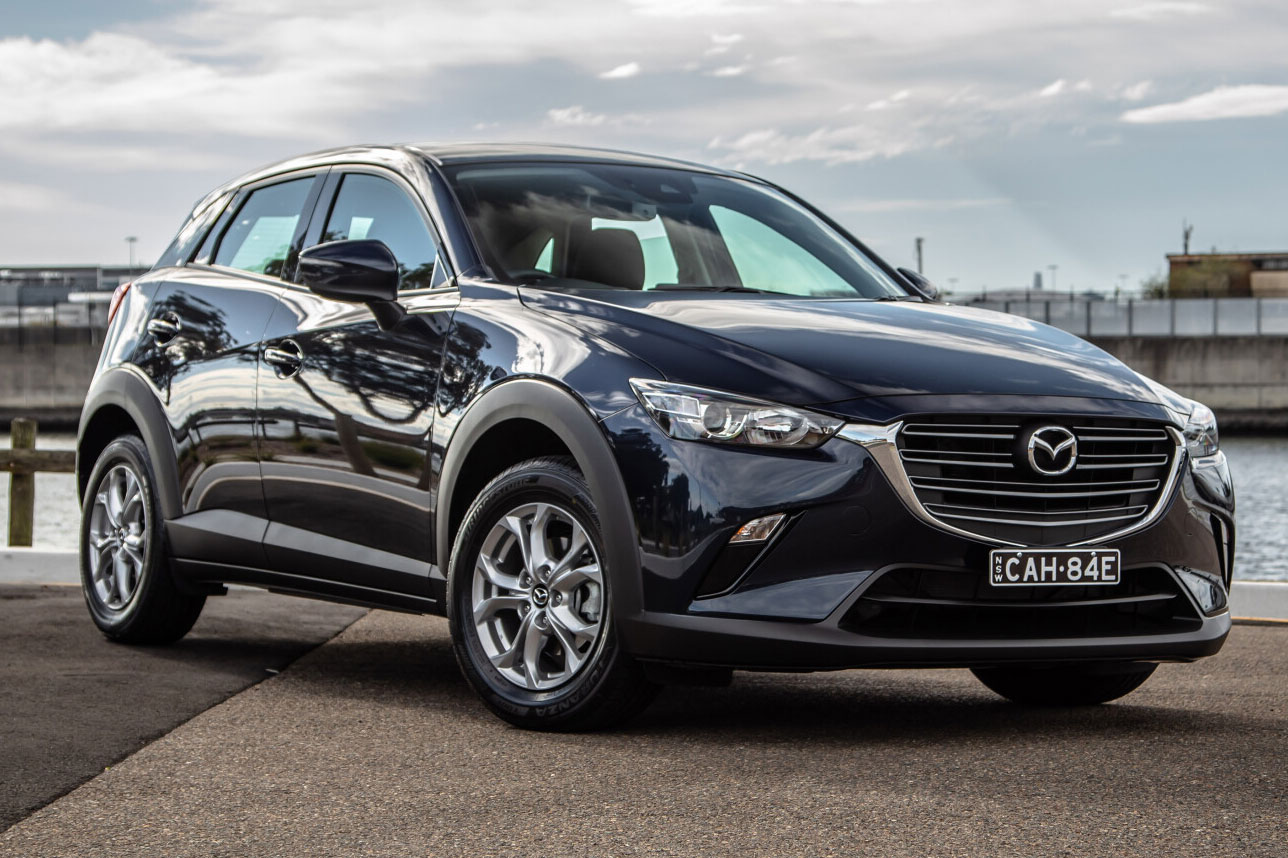
- Price: From $27,070 plus on-road costs (Sport)
- Drivetrain: 2.0L 4-cylinder petrol, 110kW/195Nm, 6-speed auto
- Combined fuel economy, CO2 emissions, fuel type: 6.3L/100km, 146g/km, 91RON
- Warranty: Five-year/unlimited km, five years of roadside assistance
- Five-year service cost: $2,200 ($440 per year)
Strengths
- Fun to drive with great handling
- Punchy 2.0L petrol engine
- Stylish design inside and out
Weaknesses
- Small rear seat and boot
- Base price higher than ever
- Not cheap to service
| Driving: | |
|---|---|
| Interior: | |
| Practicality: | |
| Overall value: |
The Mazda CX-3 may be more than 10 years old, but age isn’t slowing it down. In fact, it’s selling better than it ever has in Australia – in 2024, 18,461 units were sold, a 17 per cent improvement on 2023. So why is the CX-3 so appealing to Australian buyers?
As we’ve seen with many Mazda products over the past 20 years, the CX-3 is fun to drive in a way that a lot of competitors aren’t, offering crisp handling and meaty steering that many competitors don’t possess. It’s also powered by a relatively big engine for the segment – while the Kia Stonic has a tiny turbocharged 1.0-litre engine, the CX-3’s engine is double the size (albeit without a turbo). That gives the CX-3 a good amount of performance for the segment, while fuel economy is reasonable.
The interior uses quality materials all over the cabin and fits more exotic trimmings the further up the range you go, like a beige and tan option in the mid-spec Evolve. But even on the entry-level Sport, the fit and finish is excellent and the switchgear is also typically lovely Mazda. The in-car tech is starting to feel a bit dated, however, with the 8.0-inch touchscreen using the company’s old ‘MZD Connect’ software instead of the newer system much of the Mazda range now uses.
The CX-3’s interior is also not massive and taller adults will struggle to fit in the rear seat. Its 264-litre boot is the smallest here, though it does at least feature a dual-level boot floor so that there’s a flat space when the rear seats are folded.
Mazda’s warranty is about average for the new car market and service pricing is not cheap either, but it could be worse. Overall, it’s not difficult to see why so many buyers choose the CX-3 each month. While it’s not the most practical option in the segment, it’s more fun to drive than most, well finished inside and reasonable value for money.
Chery Tiggo 4 Pro

- Price: From $23,990 drive away (Urban)
- Drivetrain: 1.5L turbo 4-cylinder petrol, 108kW/210Nm, CVT auto
- Combined fuel economy, CO2 emissions, fuel type: 7.4L/100km, 166g/km, 91RON
- Warranty: Seven-year/unlimited km, up to seven years of roadside assistance if serviced at Chery
- Five-year service cost: $1,400 ($280 per year)
Rating
| Driving | |
|---|---|
| Interior | |
| Practicality | |
| Overall value |
Strengths
- Amazing value for money
- More practical than its size suggests
- Excellent warranty and service package
Weaknesses
- Thirsty on paper and in the real world
- Soft driving experience
- Overactive safety systems
It’s only just been launched on the market, but the Chery Tiggo 4 Pro is already making waves in the Australian new car market, with 1,018 units of the Tiggo 4 Pro sold in January 2025 alone. That’s a little surprising given that January was only its second full month on sale in Australia. So what appeals to buyers about the Tiggo 4 Pro?
Well, it’s undoubtedly an excellent value-for-money proposition. Pricing starts at just $23,990 for the entry-level Urban – that’s drive away, as well – with the top-spec Ultimate adding only $3,000 to the price. Even with premium paint, the most expensive Tiggo 4 Pro is comfortably under the $30,000 threshold – and unlike the pricing of most rivals quoted here, that includes all on-road costs.
The Tiggo 4 Pro’s seven-year/unlimited km warranty with up to seven years of roadside assistance is long, too, while the first five years of servicing only costs $1,400. In addition to that, even the entry-spec car is well equipped with features like automatic LED lighting, a dual 10.25-inch screen layout and dual-zone automatic climate control.
Away from the value equation, there’s still lots to like about the Tiggo 4 Pro. Its cabin is good quality with lots of soft touch surfaces, it’s more practical than its small size suggests with a 380-litre boot (1,225L with the rear seats folded) and it’s powered by a gutsy turbocharged 1.5-litre engine. It was also recently awarded a five-star ANCAP safety rating with impressive scores in each category.
Only the Tiggo 4 Pro’s overactive safety assist, too-soft driving experience and thirsty drivetrain count against it. But if you’re value focused, the Chery Tiggo 4 Pro is a great option and we expect even larger sales numbers from it this year.
Kia Stonic
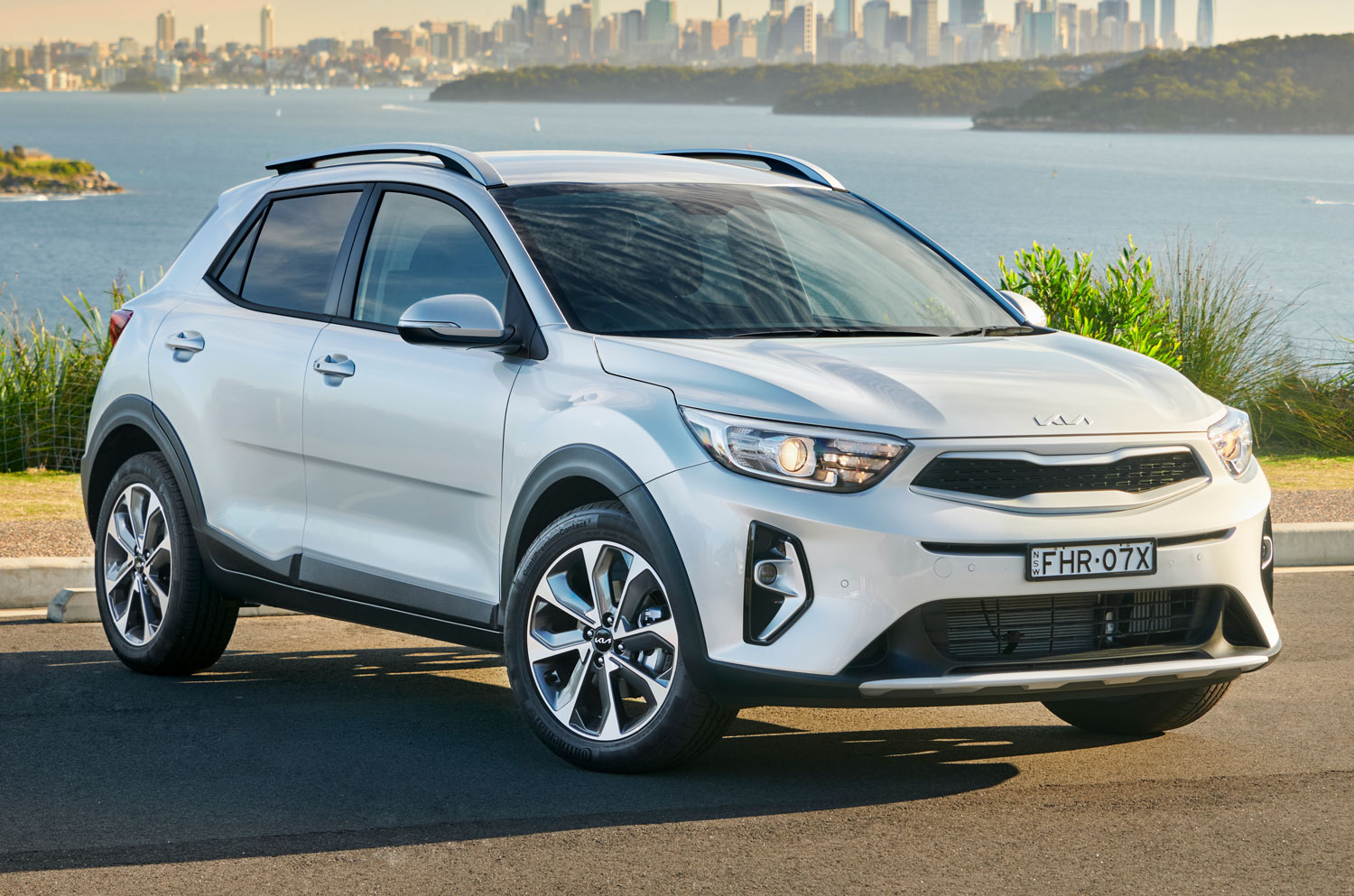
- Price: From $25,460 plus on-road costs (S)
- Drivetrain: 1.0L turbo 3-cylinder petrol, 74kW/172Nm, 7-speed dual clutch auto
- Combined fuel economy, CO2 emissions, fuel type: 5.4L/100km, 125g/km, 91RON
- Warranty: Seven-year/unlimited km, up to eight years of roadside assistance
- Five-year service cost: $2,179 ($436 per year)
Rating
| Driving | |
|---|---|
| Interior | |
| Practicality | |
| Overall value |
Strengths
- Recently updated with more safety features across the range
- Small engine is economical
- Great ride and handling balance
Weaknesses
- Short 10,000km service intervals
- More power and torque would be nice
- Unrefined transmission
With over 6,100 sold in 2024, the Kia Stonic is a solid sales performer in the small SUV segment. It recently had an update which turfed the earlier naturally aspirated 1.4-litre petrol engine in the base and mid-spec cars for the characterful and far more efficient turbo three-cylinder engine that was once exclusive to the top-spec GT-Line, as well as adding more standard equipment across the range.
By doing so, Kia increased the Stonic’s value considerably, and features like blind-spot monitoring with rear cross-traffic alert, alloy wheels and heated/auto-folding mirrors are now standard on the entry-level Stonic S. Add in the gutsier and more efficient turbo three-cylinder engine and the Stonic is far more recommendable than before.
The interior of the Stonic, based on the last-generation Rio, is handsome to look at and reasonable quality. Its 8.0-inch touchscreen is well featured with wireless Apple CarPlay and Android Auto – plus inbuilt sat-nav in upper specs – and is very easy to use.
The rear seat and boot of the Stonic are roomier than you first think, with excellent packaging and a healthy 352-litre boot that expands to 1,155L with the rear seats folded – though there’s still a noticeable lip when done. The Stonic’s transmission is also a bit indecisive at low speeds, while its engine could also do with more power and torque and the 10,000km service intervals are short.
The recent update has done a lot to enhance the Stonic’s appeal: it’s better equipped, more refined and more efficient than before, but still remains good to drive, practical for its size and features easy-to-use technology, making it good value for money.
Hyundai Venue
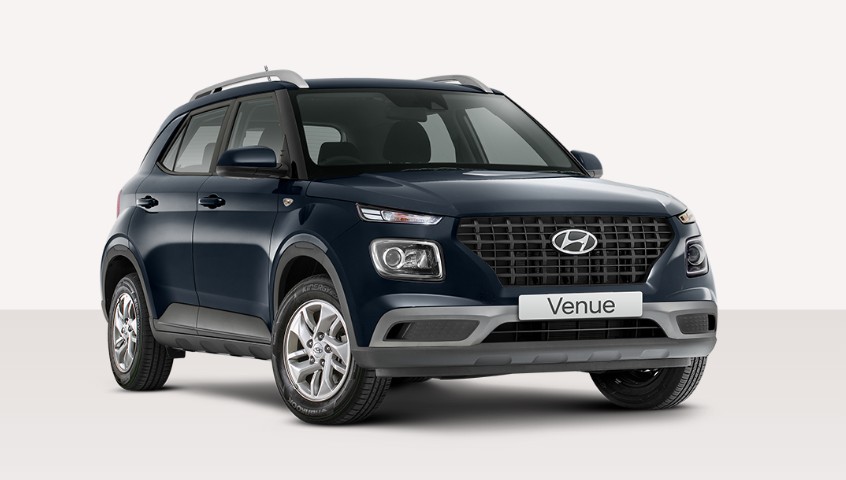
- Price: From $22,750 plus on-road costs (Venue manual)
- Drivetrain: 1.6L 4-cylinder petrol, 90kW/151Nm, 6-speed manual or auto
- Combined fuel economy, CO2 emissions, fuel type: 7.0-7.2L/100km, 160-165g/km, 91RON
- Warranty: Five-year/unlimited km, lifetime roadside assistance if serviced at Hyundai
- Five-year service cost: $1,865 ($373 per year)
Rating
| Driving | |
|---|---|
| Interior | |
| Practicality | |
| Overall value |
Strengths
- Boxy styling gives impressive interior space
- Still available with a manual transmission
- Great ride and handling balance
Weaknesses
- Engine could be more powerful and quieter
- Features like blind-spot monitoring only available on top-spec Elite
- Hard interior plastics
The Hyundai Venue replaced the Accent as the brand’s least expensive car locally upon its release back in 2019 and has sold well since then – last year’s result of almost 7,000 units sold was up 13 per cent on its 2023 result and third place in the segment.
The Venue has clear appeal as the entry point to the Hyundai range. The base model is currently available for just $25,990 drive away and even the mid-spec Active is around the $30,000 mark once on-road costs are included. Plus, its warranty is a lengthy five years and if it’s serviced through a Hyundai dealership, earns roadside assistance for life.
In addition to the value equation, the Venue’s strong practicality earns it brownie points. Its 355-litre boot is bigger than you’d expect and features some clever touches like a dual-level boot floor. The rear seat, although largely featureless, is roomy for the size and even taller adults will be fine thanks to excellent headroom within its boxy dimensions.
On the road, the Venue’s ride quality is excellent – soft but taut so that bumps don’t unsettle it, and it’s reasonably fun to drive as well. The engine could be gutsier and a bit more refined but at least it offers the choice of a manual transmission on the entry-level model.
Overall, the Hyundai Venue presents solid value for money in the small SUV segment. While its drivetrain could be better, it otherwise drives nicely, it’s quite practical and its service pricing is quite reasonable as well.
Mitsubishi ASX
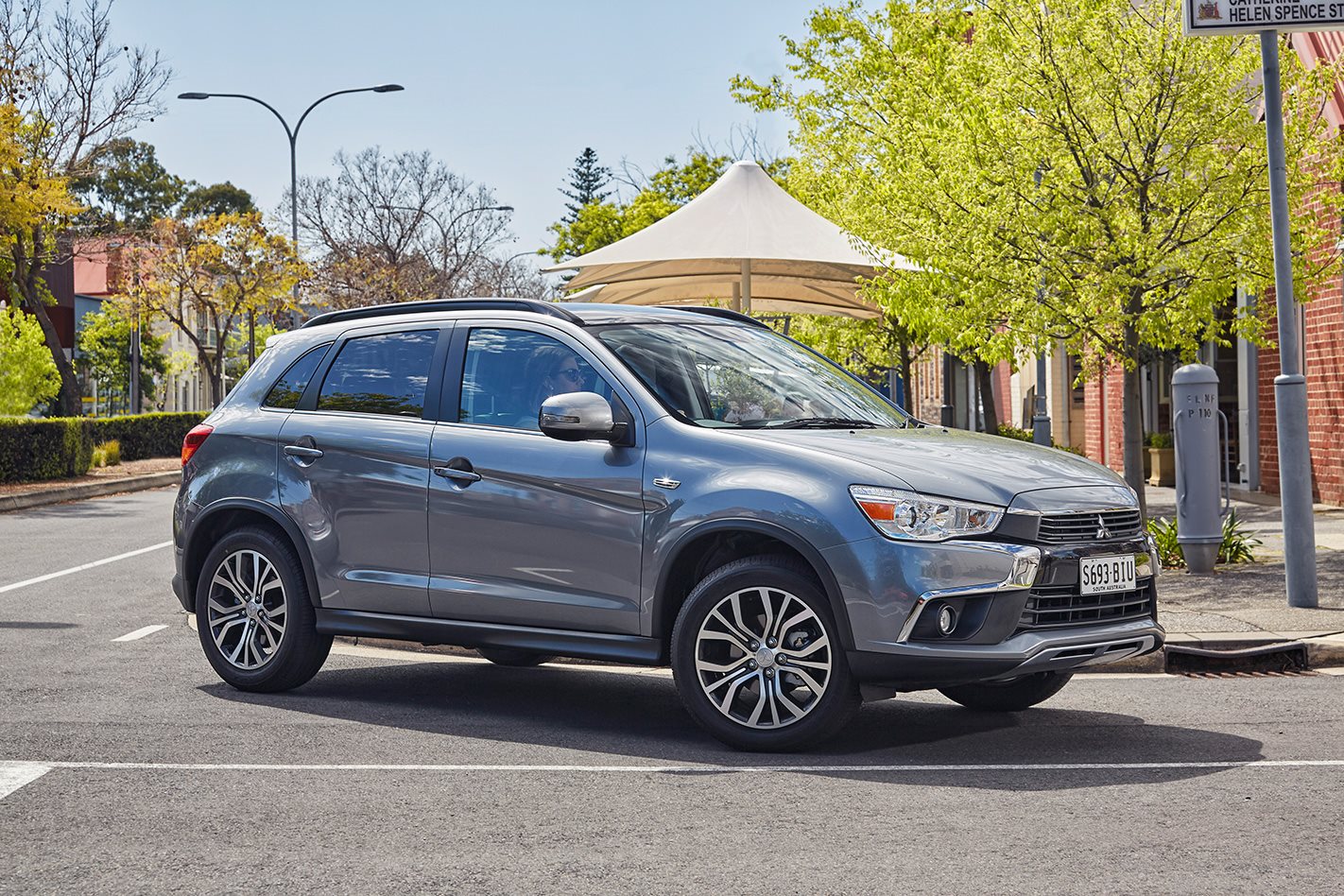
- Price: From $24,490 plus on-road costs (GS manual)
- Drivetrain: 2.0L or 2.4L 4-cylinder petrol, 110kW/197Nm or 123kW/222Nm, 5-speed manual or CVT auto
- Combined fuel economy, CO2 emissions: 7.6-7.9L/100km, 176-186g/km
- Warranty: 10-year/200,000 km (if serviced at Mitsubishi), up to four years of roadside assistance
- Five-year service cost: $1,945 ($389 per year)
Rating
| Driving | |
|---|---|
| Interior | |
| Practicality | |
| Overall value |
Strengths
- Well priced and well equipped
- Excellent warranty and servicing program
- Great size – a bit larger than some rivals but not too big
Weaknesses
- Thirsty and unrefined engines
- Some safety features aren’t fitted across the range
- Feeling its age
It’s not the newest kid on the block, but the Mitsubishi ASX has been massively successful for its maker. Released in 2010, and continuously updated since to keep relevant, the ASX sold over 12,300 units locally last year – enough for fifth place against newer rivals. Mitsubishi Motors Australia has also confirmed that a new generation of ASX will go on sale sometime in 2025.
Key to the ASX’s success in Australia is its value for money. While many rivals have become more expensive over the years, the ASX has stayed in roughly the same $25,000 to $35,000 pricing point. Plus, buyers get a solid five-year warranty that’s extendable up to 10 years/200,000km in total if serviced through a Mitsubishi dealership, and with a $389 average annual cost over the first five services, why would you not?
Another highlight of the ASX is its practicality, because it is larger on both the inside and outside than key rivals like the Mazda CX-3. Fitting child seats and luggage is much easier in the Mitsubishi than the Mazda thanks to its 393-litre boot, which is 129L larger than the CX-3. Its size helps it feel more solid on the road as well.
In some ways, the ASX can’t hide its age though – even the larger 2.4-litre engine is unrefined and slow, with the 2.0-litre worse in both counts, and its interior feels dated through its instruments and touchscreen. Thankfully, the ASX range includes Apple CarPlay and Android Auto, as the native system is a bit slow to use.
Still, the cabin is reasonable quality and while the driving experience isn’t the sportiest, it’s still comfortable. We would like to see more safety features in the entry-level models however, with equipment like lane keeping assistance, blind-spot monitoring and rear cross-traffic alert limited to the mid-spec LS and up.
Overall, there’s much to like with the ASX range. Some rivals feel newer and include more safety equipment across the range, as well as featuring more refined drivetrains. But Mitsubishi’s big-selling small SUV gives buyers a spacious cabin for the segment, an excellent warranty program and an easy and comfortable driving experience.
Chery Omoda 5

- Price: From $24,490 plus on-road costs (FX)
- Drivetrain: 1.5-litre turbocharged 4-cylinder petrol, 108kW/210Nm, CVT auto; Chery Omoda E5 – 150kW/340Nm single electric motor
- Combined fuel economy, CO2 emissions, fuel type: 6.9L/100km, 164g/km, 91RON
- Warranty: Seven-year/unlimited km, seven years of roadside assistance if serviced at Chery
- Five-year service cost: $1,400 ($280 per year)
Rating
| Driving | |
|---|---|
| Interior | |
| Practicality | |
| Overall value |
Strengths
- Well priced and well equipped
- Great warranty and cheap servicing program
- Futuristic styling and interior layout
Weaknesses
- Short 10,000km service intervals
- Overactive active safety features
- CVT dulls acceleration
The Omoda 5 was the product that Chery utilised to re-launch in Australia in early 2023. The brand’s first truly global product, the Omoda 5 is what you’d expect from the Chery brand: well priced, well equipped, contemporary styling and covered by a long warranty. And with over 6,100 sales in 2024, clearly Australians agree.
Since it was released, the Omoda 5 has seen a range shuffling with extra value added in the form of a new entry-level FX model, which is priced from $24,490 plus on-road costs. It keeps the upper-spec models’ turbocharged engine and safety features, including autonomous emergency braking, lane keeping assistance, adaptive cruise control and blind-spot monitoring with rear cross-traffic alert.
Like the smaller Tiggo 4 Pro, the quality inside the Omoda 5 impresses with plenty of soft touch materials used throughout the cabin, and the dashboard layout is modern as well. In-car tech is handled through a dual-10.25 inch set up for the infotainment and driver’s display, and while both systems can take some getting used to, the screen quality is good.
What’s not so good about the Omoda 5 is the intrusiveness of the active safety systems such as the lane-keeping assistance and active speed monitoring. Plus, the steering is very light, which accentuates the indecisive lane keep assist. While it’s well planted, the ride quality can also be a bit too jumpy thanks to the soft suspension set-up. Plus, its 360-litre boot isn’t that big and is otherwise featureless, while the rear seat is tight for taller folks.
Still, the Omoda 5 is excellent value for money. It’s well equipped, cheap to service, covered by a long warranty, looks exotic and is reasonably practical as well. No wonder so many have found favour with Australians.
Suzuki Vitara
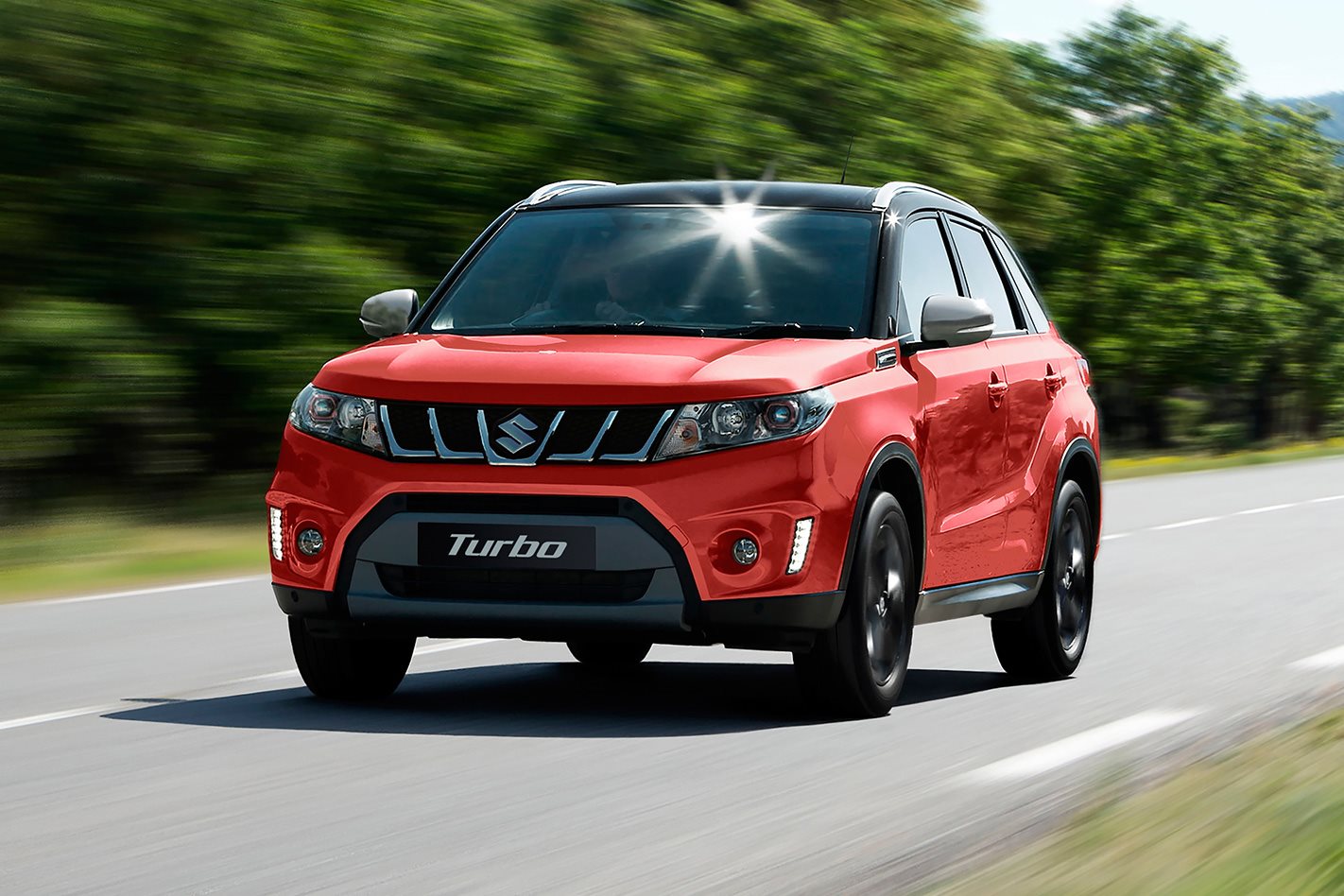
- Price: From $27,500 drive away (base manual)
- Drivetrain: 1.6-litre NA or 1.4-litre turbocharged 4-cylinder petrol, 86kW/156Nm or 103kW/220Nm, 5-speed manual or 6-speed automatic
- Combined fuel economy, CO2 emissions, fuel type: 5.9-6.2L/100km, 138-145g/km, 91RON
- Warranty: 5-year/unlimited km, five years of roadside assistance
- Five-year service cost: Turbo: $1,985 ($397 per year, 10k km service intervals), 1.6L NA: $2,155 ($431 per year with 15k km service intervals)
Rating
| Driving | |
|---|---|
| Interior | |
| Practicality | |
| Overall value |
Strengths
- Fun to drive for the segment
- BoosterJet turbo engine is a gem
- Still available as a manual
Weaknesses
- Safety features like AEB not available until turbo model
- Short 10,000km service intervals for the turbo
- Feeling a bit dated
As far as nameplates go, the Vitara is one of the oldest in the segment as its name has been used in a few different forms since 1988, though the current model has been on sale since 2015 and received a light update in 2018 to freshen it up.
It’s reportedly about to get another update later this year, but the Vitara currently offers three models to choose from and a choice of two drivetrains: a naturally aspirated 1.6-litre engine or a smaller but turbocharged 1.4-litre unit. The 1.6-litre is only available as a base model, with the 1.4-litre turbo standard in the Turbo and Turbo Allgrip models.
The Vitara range is reasonably well equipped with features like a leather steering wheel, inbuilt satellite navigation and Apple CarPlay and Android Auto smartphone mirroring, but the base model disappointingly misses out on features like autonomous emergency braking, lane keeping assistance and blind-spot monitoring. In 2025, we think that’s unacceptable.
The Vitara’s ride and handling balance is positive however, and from behind the wheel, it’s fun to drive with a light on its feet feeling and – if you choose the turbo engine – a grunty little motor that can be quite efficient. Less impressive, however, is the dated interior with hard plastics and that it’s not the most practical option in the segment.
Overall, the Suzuki Vitara is feeling a bit dated and hopefully the incoming facelift will change that. For now, there’s good buying in the turbo models but with no hybrid options and no active safety kit like AEB across the range, there are better options in the segment.
MG ZST

- Price: From $22,888 drive away (Excite)
- Drivetrain: 1.5-litre 4-cylinder NA petrol or 1.3-litre 3-cylinder turbo petrol, 84kW/150Nm or 115kW/230Nm, CVT (NA) or 6-speed auto
- Combined fuel economy, CO2 emissions, fuel type: 6.9-7.3L/100km, 161-162g/km, 91RON
- Warranty: 10-year/250,000km, 12 months of roadside assistance
- Five-year service cost: $1,566 (1.5L – $313 annually), $1,505 (1.3T – $301 annually)
Rating
| Driving | |
|---|---|
| Interior | |
| Practicality | |
| Overall value |
Strengths
- Strong value for money
- Cheap service pricing
- Well featured across the range
Weaknesses
- New ZS is more modern (though more expensive)
- Short 10,000km service intervals
- Lack of physical buttons for features like the AC
The MG ZST debuted locally in 2017 as the ZS and after a few years, the facelifted ZST joined the range with more features, revised styling and a more powerful 1.3-litre turbo-petrol engine at the top of the range. The ZS remained on sale and together, they’ve outsold every other small SUV in Australia since 2021.
Value is undoubtedly the key to the ZST’s success in Australia. Not only is it cheap to buy – especially now in run out – but its 10-year warranty is industry leading and its service pricing is cheap as well. Plus, even the entry-level Vibe is well equipped with features like automatic LED lighting, a 10.1-inch touchscreen with Apple CarPlay and Android Auto and a full active safety suite.
The ZST’s interior is not the most up-to-date but it’s well featured and the material quality is good for the price with a lot of synthetic leather trim around the cabin. Both variants use a 10.1-inch touchscreen that features smartphone mirroring and satellite navigation. It’s not the easiest or fastest system to use, but the screen quality is good.
The driving experience of the ZST is comfortable, though it could be a bit quieter for road noise and the driving position is hampered by a lack of reach adjustment for the steering wheel. The naturally aspirated engine in the ZST Vibe is not the punchiest engine in the world, but it’s fine among the competition for the price – the turbo unit in the Essence is much livelier, if that’s what you’re searching for.
Overall, it’s not difficult to see why the MG ZST has been so popular in Australia. Now that it’s in run out, its pricing is even sharper and it’s one of the few new cars available for under $25,000 drive away. Add in a 10-year warranty, a long list of equipment and a relaxed driving experience and it’s easy to see why it’s been so popular since its release.
GWM Haval Jolion
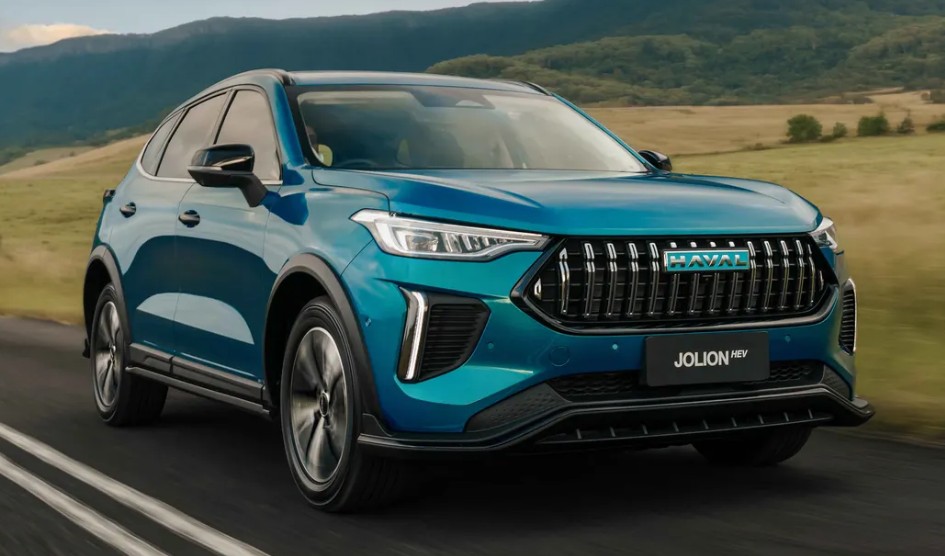
- Price: From $26,990 drive away (Premium)
- Drivetrain: 1.5L turbocharged 4-cylinder petrol, 105kW/210Nm, seven-speed dual-clutch auto
- Combined fuel economy, CO2 emissions, fuel type: 8.1L/100km, 186g/km, 91RON
- Warranty: Seven-year/unlimited km warranty, five years of roadside assistance
- Five-year service cost: $1,840 ($368 per year)
Rating
| Driving | |
|---|---|
| Interior | |
| Practicality | |
| Overall value |
Strengths
- Excellent value for money
- Full safety suite across the range
- Recent facelift has modernised the exterior
Weaknesses
- Strange service intervals
- High fuel consumption
- Cumbersome infotainment system
With 14,238 sales in 2024 alone in Australia, the GWM Haval Jolion was the third-best selling small SUV and it’s easy to see why. Priced from just $26,990 drive away and sporting larger dimensions than a lot of competitors, the Jolion offers a lot of features and metal for the money.
Under the bonnet is a 1.5-litre turbocharged petrol engine that drives the front wheels using a seven-speed dual-clutch transmission. It makes reasonable 105kW and 210Nm outputs, though its 8.1L/100km claimed fuel consumption is the highest of the sub-$30k entrants – and in our experience, it’s likely to be even higher in the real world as well.
The Jolion’s cabin is a mixed bag. The quality is good for the price, and it’s also quite practical and spacious for its size. Though the infotainment screen is good quality, trying to turn the intrusive active safety features off can be difficult at speed thanks to the confusing menus.
The Jolion’s ride and handling balance also trails the class leaders – it’s too softly sprung at times, giving lacklustre body control. The driving position is also compromised thanks to the lack of reach adjustment for the steering wheel and under-thigh angle adjustment for the driver’s seat, which makes you feel as though you’re sitting on the seat, rather than in it.
Still, the Jolion’s value equation is excellent and that’s not just from cheap purchase pricing but also from cheap servicing and a long warranty. It’s easy to see why so many people have bought a Jolion, but as always, make sure you do your research before committing.
Best Small SUV series
Looking to get into a brand-new small SUV? Our stories below will guide you to the model that best suits your needs!

